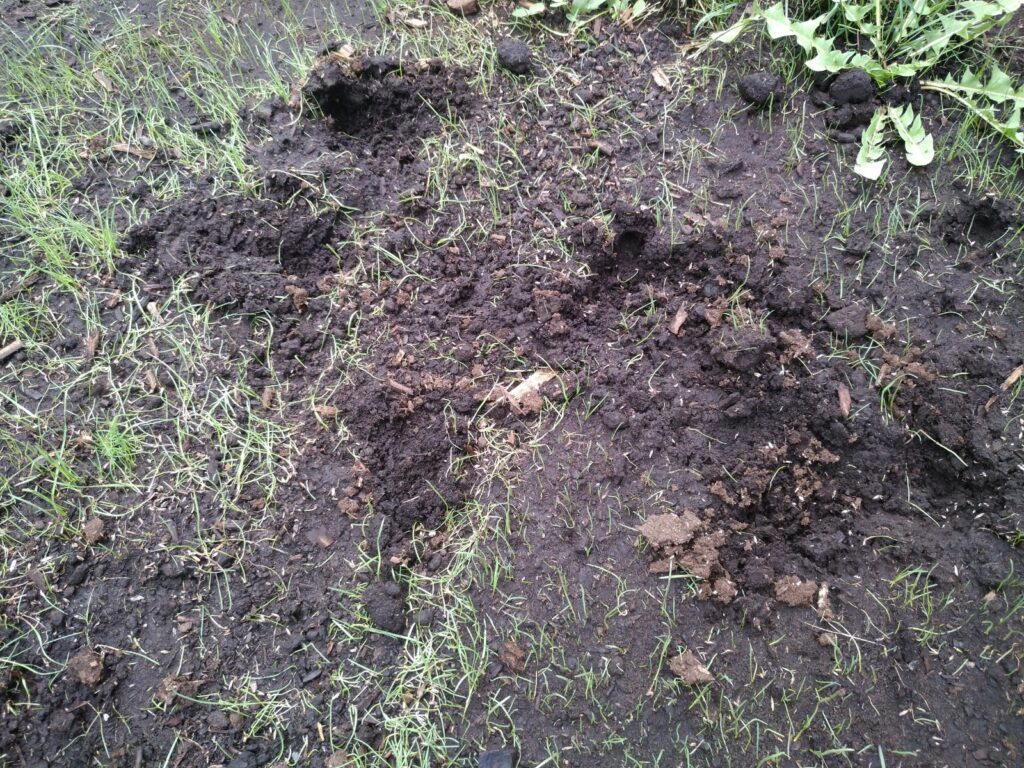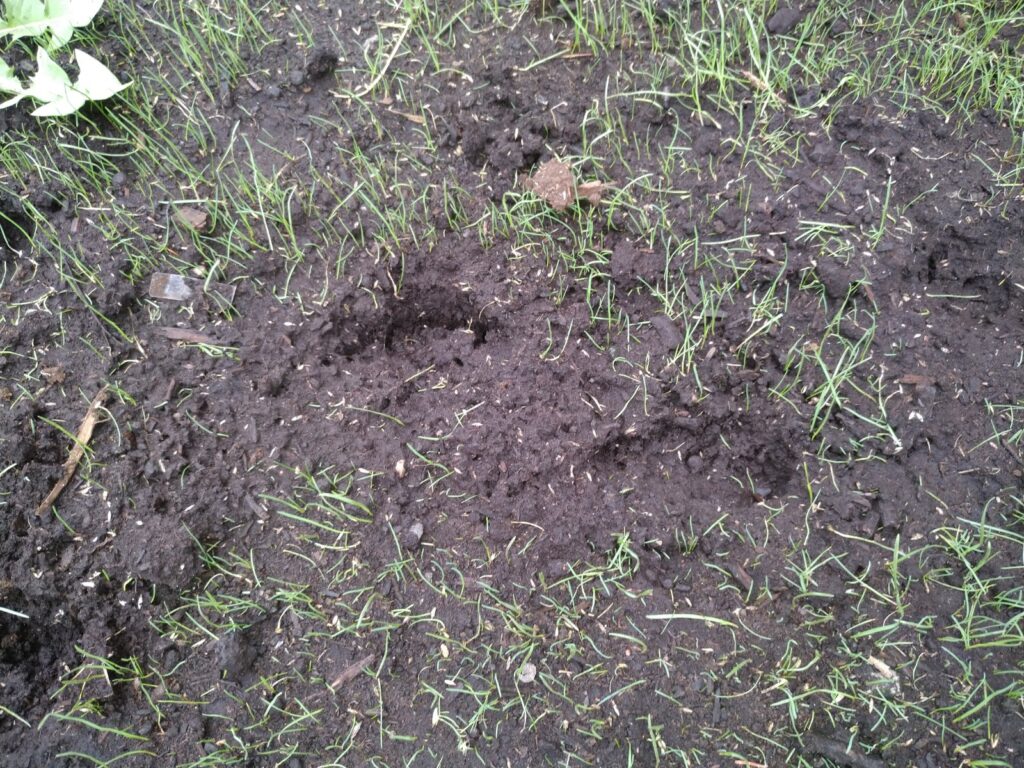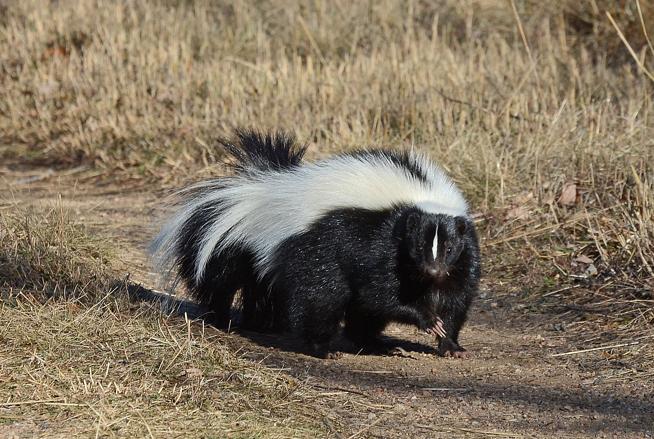Known for their bad smell, skunks have the potential to cause big trouble for property owners if they aren’t under control. One of the most common problems homeowners struggle with skunks is digging. They are known to churn up yards and turn a beautiful green lawn into a big mess. Safe, effective skunk removal is possible with Skedaddle Humane Wildlife Control. The team at Skedaddle is equipped to diagnose the wildlife issue and take steps to give homeowners their peace of mind back.
Learning the Attributes of a Skunk
One fact about skunks is that they have extremely poor vision. Because of this, they rely on their excellent sense of smell to help them find food. Skunks are typically terrible climbers, so they tend to stick to the ground. There, they can find a smorgasbord of their preferred food options such as bugs, grubs, insect larvae, and some types of bees. Skunks also enjoy foraging for meals of berries, seeds, nuts, and small rodents. Some skunks may also be using unsecured garbage cans as a source of food.
Because of their food preferences, skunks often have to dig in the ground to feed. They tend to be more active at night, so homeowners may not realize there is a skunk around if they don’t see it out digging during the daylight hours. Their size can make it difficult for them to hide in small spaces when they feel threatened, and this could be why evolution equipped skunks with their most recognizable defensive mechanism — a potent spray.
Identifying the Potential Lures
Homeowners with a skunk problem may get frustrated with the most noticeable issue, holes in their yard and garden. They may leave behind multiple divots in a yard and mounds of dirt from their digging. A determined skunk could cause significant lawn damage. If there is a garden, skunks may also tear it up to eat the fruits or vegetables that are close to the ground.
Property owners who leave garbage bags or open trash containers outside may attract hungry skunks. They also may try to get into the house if there is a pet door, looking for food. Skunks might attempt to make a nest under a deck or beneath a home or another structure, such as a shed or garage. Besides leaving behind urine and feces, they also may bring the potential for other parasites and diseases to people and pets. Humans and animals that accidentally come across and startle a skunk could get a dose of their powerful spray and smell, which is notoriously difficult to remove.

Preventing a Skunk Invasion
Before skunks turn a beautiful green yard into piles of dirt and unsightly holes, property owners can take some preventative steps to keep these animals away. They should ensure there are no spaces for animals to squeeze into under structures or around the deck. Homeowners can use a mesh or wire screen, buried at least 1 foot underground, to keep critters from burrowing underneath.
It’s also important for people to make sure trash is kept in clean containers that close securely and tightly. Leaving loose bags or open garbage cans out often attracts skunks and many other species of wildlife to a property. Additionally, pet food should never be kept outside for dogs or cats because skunks will quickly smell it and gobble it up.
To protect a lawn, experts recommend that homeowners treat their grass with a substance that kills grubs in the late spring or early summer. This may help deter skunks during the height of the summer and fall season. Gardeners can also protect their plants by installing fencing around their garden area to keep skunks from visiting. Chicken wire may help keep fruits and vegetables protected from hungry invaders. At night, when it’s dark outside and skunks are most active, it may be helpful to have a motion-activated floodlight for the yard to scare away small animals and keep them from digging and destroying the grass.

Repairing the Damage Left Behind
A lawn that has been ravaged by skunks can be repaired, but it’s important first to look for wildlife removal solutions to keep the damage from coming back. Once the skunk problem is under control, homeowners can start to replenish the areas which are missing grass and fix the holes. Property owners can begin by smoothing out the divots left behind by the skunks and filling them with soil. Then, they can apply grass seed and lawn fertilization products to regenerate their lawn. It’s generally best to keep the lawn wet with a sprinkler or use frequent watering to continue to keep the yard skunk-free.
Skunks can cause serious lawn damage because of their natural instinct to dig while looking for tasty insects. Still, it is possible to keep them from wrecking a yard and restore the beauty of a pristine lawn. Learn more about skunk removal tips and preventative advice to keep them away from Skedaddle Humane Wildlife Control today.



